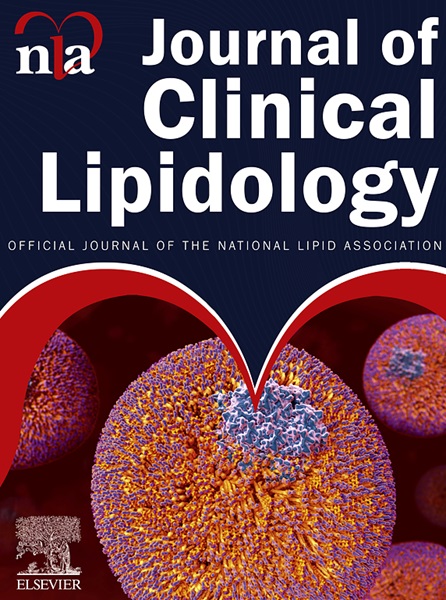The relationship between ceramide profile and residual inflammatory risk in patients with coronary artery disease: Insights from an prospective study
IF 3.6
3区 医学
Q2 PHARMACOLOGY & PHARMACY
引用次数: 0
Abstract
Although progress has been made in managing cholesterol, targeting inflammation is essential for further reducing cardiovascular risk, as CVDs remain the leading cause of death globally. This study aimed to explore the association between plasma ceramide levels and residual inflammatory risk in patients with CAD. A cross-sectional observational design was adopted using data from a secondary analysis of a multicenter prospective cohort study in China. Patients were categorized into two groups based on a hs-CRP level of 2.0mg/L. Plasma ceramide levels were measured using the LC-MS/MS system. By collecting and statistically analyzing patient demographic and clinical characteristics, differences were compared between the low residual inflammatory risk group (Low RIR) and the high residual inflammatory risk group (High RIR). Multivariate logistic regression analysis was used to assess the interaction of plasma ceramides with high residual inflammation risk. A total of 778 patients with confirmed CAD were included in the study. Compared to the Low RIR, Cer (d18:1/16:0), Cer (d18:1/18:0), Cer (d18:1/20:0), Cer (d18:1/22:0), Cer (d18:1/24:0), and Cer (d18:1/24:1), were significantly elevated in the High RIR group. Spearman correlation analysis indicated that Cer (d18:1/16:0) levels were positively correlated with hsCRP. Further multivariable logistic regression analysis revealed that Cer (d18:1/16:0) was a significant independent indicator of high RIR beyond conventional cardiovascular risk factors. This study found a significant association between specific plasma ceramide Cer (d18:1/16:0) and high residual inflammatory risk in CAD patients, suggesting it could be an important inflammatory biomarker in the management of cardiovascular diseases.冠心病患者神经酰胺谱与残余炎症风险之间的关系:前瞻性研究的启示
尽管在控制胆固醇方面取得了进展,但由于心血管疾病仍然是全球的主要死因,因此针对炎症的治疗对于进一步降低心血管风险至关重要。本研究旨在探讨心血管疾病患者血浆神经酰胺水平与残余炎症风险之间的关系。研究采用横断面观察设计,使用了中国一项多中心前瞻性队列研究的二次分析数据。根据 hs-CRP 水平达到 2.0mg/L 将患者分为两组。使用 LC-MS/MS 系统测量血浆神经酰胺水平。通过收集和统计分析患者的人口统计学和临床特征,比较了低残余炎症风险组(Low RIR)和高残余炎症风险组(High RIR)之间的差异。多变量逻辑回归分析用于评估血浆神经酰胺与高残余炎症风险之间的相互作用。研究共纳入了 778 名确诊为 CAD 的患者。与低残余炎症风险组相比,高残余炎症风险组的神经酰胺(d18:1/16:0)、神经酰胺(d18:1/18:0)、神经酰胺(d18:1/20:0)、神经酰胺(d18:1/22:0)、神经酰胺(d18:1/24:0)和神经酰胺(d18:1/24:1)显著升高。斯皮尔曼相关分析表明,铈(d18:1/16:0)水平与 hsCRP 呈正相关。进一步的多变量逻辑回归分析表明,Cer(d18:1/16:0)是高 RIR 的一个重要独立指标,超越了传统的心血管风险因素。这项研究发现,特定血浆神经酰胺 Cer(d18:1/16:0)与 CAD 患者的高残余炎症风险之间存在显著关联,这表明它可能是心血管疾病管理中的一个重要炎症生物标志物。
本文章由计算机程序翻译,如有差异,请以英文原文为准。
求助全文
约1分钟内获得全文
求助全文
来源期刊
CiteScore
7.00
自引率
6.80%
发文量
209
审稿时长
49 days
期刊介绍:
Because the scope of clinical lipidology is broad, the topics addressed by the Journal are equally diverse. Typical articles explore lipidology as it is practiced in the treatment setting, recent developments in pharmacological research, reports of treatment and trials, case studies, the impact of lifestyle modification, and similar academic material of interest to the practitioner.
Sections of Journal of clinical lipidology will address pioneering studies and the clinicians who conduct them, case studies, ethical standards and conduct, professional guidance such as ATP and NCEP, editorial commentary, letters from readers, National Lipid Association (NLA) news and upcoming event information, as well as abstracts from the NLA annual scientific sessions and the scientific forums held by its chapters, when appropriate.

 求助内容:
求助内容: 应助结果提醒方式:
应助结果提醒方式:


